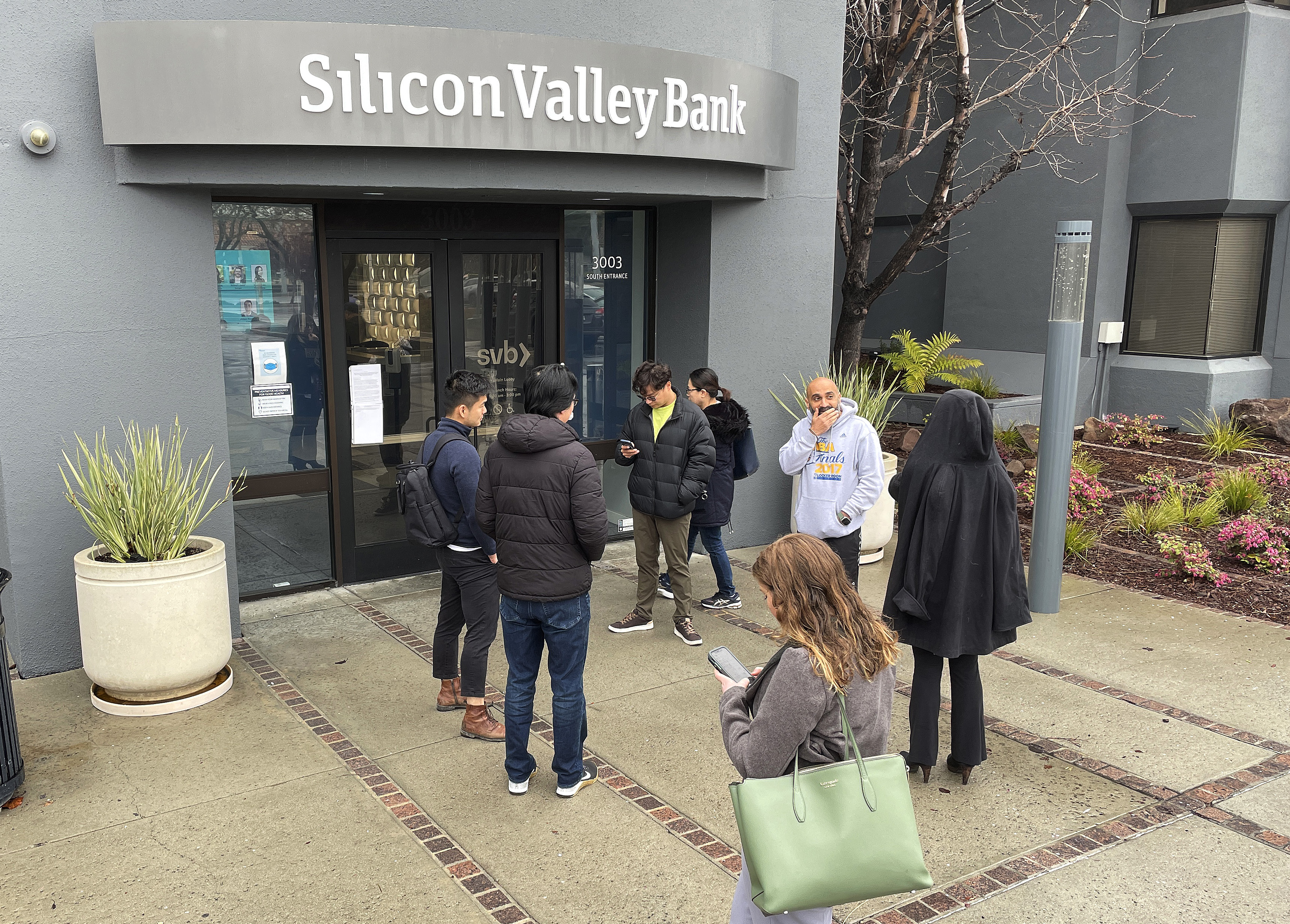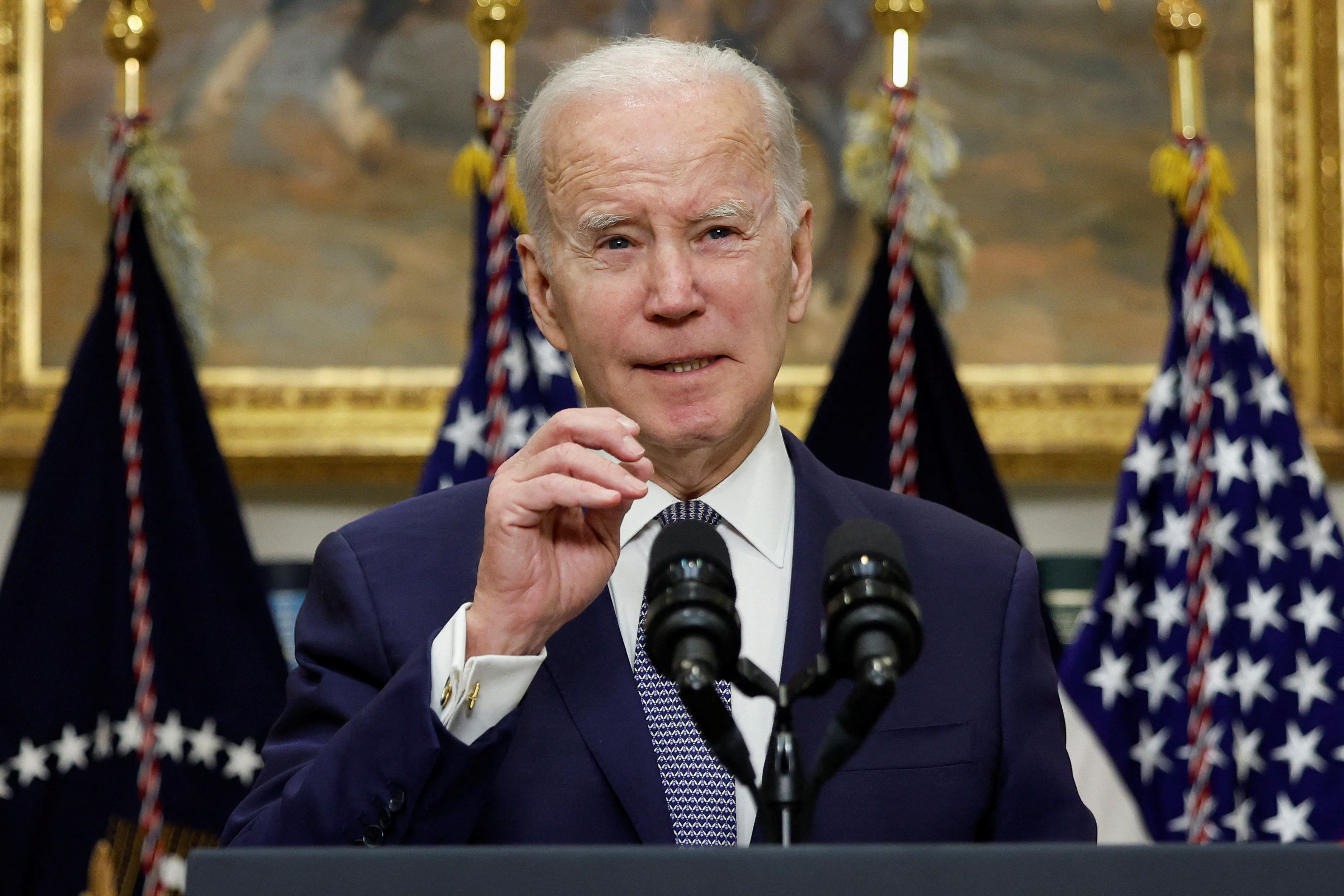
Governments in the United Kingdom and the United States have taken extraordinary steps to stop a potential banking crisis after the historic failure of Silicon Valley Bank (SVB), even as another major bank was shut down.
The UK Treasury and the Bank of England announced early on Monday that they had facilitated the sale of SVB UK to HSBC, Europe’s biggest bank, ensuring the security of 6.7 billion pounds ($8.1bn) of deposits.
British officials worked throughout the weekend to find a buyer for the UK subsidiary of the California-based bank. Its collapse was the second-largest bank failure in history, behind only the 2008 failure of Washington Mutual.
US regulators also worked all weekend to try to find a buyer. Those efforts appeared to have failed on Sunday, but US officials assured all depositors that they could access all their money quickly.
The announcement came amid fears that the factors that caused the Santa Clara, California-based bank to fail could spread.
In a sign of how fast the financial bleeding was occurring, regulators announced that New York-based Signature Bank had also failed and was being seized on Sunday. At more than $110bn in assets, Signature Bank is the third-largest bank failure in US history.
Santa Clara-based SVB, the US’s 16th largest bank, has been imperilled since Friday, when its assets were seized following the mass withdrawal of funds by depositors.
The bank’s financial health had been under scrutiny following its announcement of plans to raise $1.75bn in the capital after the loss-making sale of bonds
In a brief news conference on Monday, US President Joe Biden sought to dispel concerns, saying “all customers who had deposits in these banks can rest assured – rest assured – they’ll be protected and they’ll have access to their money as of today”.
This includes small businesses across the US, said Biden, who also pledged that “no losses would be borne by the taxpayers”. “We must get the full accounting of what happened,” he told reporters. “In my administration, no one is above the law.”
SVB, whose business heavily catered to technology workers and venture capital-backed companies, had approximately $200bn in assets at the time of its collapse.
Campbell R Harvey, a professor at Duke University’s Fuqua School of Business, said SVB was not among the biggest banks and had failed for different reasons than institutions that collapsed in 2007-08.
“If you think about the global financial crisis, there were a number of banks that were at risk at the same time and we started to learn about them and these were not small players – these were big players and they were all highly correlated,” Harvey told Al Jazeera.
“This bank is different. It’s not in the top tier. Most people never heard about it but it’s been focused on tech investors in Silicon Valley … so I don’t see the similarities with 2007 at all.”
Harvey said while multiple banks were extremely over-leveraged in the run-up to the 2007-08 crisis, SVB had failed due to its overreliance on the tech sector, which has lost trillions of dollars in value over the last year.
“SVP is a story about an undiversified loan book,” he said. “That’s different.”
Jittery markets
Bank shares in Europe and Asia plunged as the collapse continued to batter markets, while US large banks failed to hold onto a brief premarket rally after authorities moved to stem the contagion.
Europe’s STOXX bank index was down 4.3 percent on Monday, having shed 3.78 percent on Friday, leaving it on track for its biggest two-day fall since Russia began its invasion of Ukraine in February 2022.
Big fallers were Germany’s Commerzbank down 7.5 percent and embattled Credit Suisse down 7.8 percent.
Earlier in the day, Japan’s Topix bank index lost 4 percent, while Singapore’s largest banks also lost ground, down more than 1 percent.
HSBC’s London-listed shares were down 2.6 percent after it said it would acquire the UK subsidiary of stricken SVB for 1 pound ( $1.21), helping curb the fallout in Britain.
In an effort to shore up confidence in the banking system, the US Treasury Department, Federal Reserve and Federal Deposit Insurance Corporation (FDIC) said on Sunday that all SVB clients would be protected and able to access their money. They also announced steps that are intended to protect the bank’s customers and prevent additional bank runs.
“This step will ensure that the US banking system continues to perform its vital roles of protecting deposits and providing access to credit to households and businesses in a manner that promotes strong and sustainable economic growth,” the agencies said in a joint statement.
Under the plan, depositors at SVB and Signature Bank, including those whose holdings exceed the $250,000 insurance limit, will be able to access their money on Monday.
Also on Sunday, another beleaguered bank, First Republic Bank, announced that it had bolstered its financial health by gaining access to funding from the Fed and JPMorgan Chase.
At my direction, @SecYellen and my National Economic Council Director worked with banking regulators to address problems at Silicon Valley Bank and Signature Bank.
I’m pleased they reached a solution that protects workers, small businesses, taxpayers, and our financial system. https://t.co/CxcdvLVP6l
— President Biden (@POTUS) March 13, 2023
Emergency lending programme
The Fed late on Sunday announced an expansive emergency lending programme that is intended to prevent a wave of bank runs that would threaten the stability of the banking system and economy as a whole.
Fed officials characterised the programme as akin to what central banks have done for decades: Lend freely to the banking system so that customers would be confident that they could access their accounts whenever needed.
The lending facility will allow banks that need to raise cash to pay depositors to borrow that money from the Fed, rather than having to sell treasuries and other securities to raise the money. SVB had been forced to dump some of its treasuries at a loss to fund its customers’ withdrawals. Under the Fed’s new programme, banks can post those securities as collateral and borrow from the emergency facility.
The Treasury has set aside $25bn to offset any losses incurred under the Fed’s emergency lending facility. Fed officials said, however, that they do not expect to have to use any of that money, given that the securities posted as collateral have a very low risk of default.
Analysts said the Fed’s programme should be enough to calm financial markets.
“Monday will surely be a stressful day for many in the regional banking sector, but today’s action dramatically reduces the risk of further contagion,” economists at Jefferies, an investment bank, said in a research note.
Though Sunday’s steps marked the most extensive government intervention in the banking system since the 2008 financial crisis, its actions are relatively limited compared with what was done 15 years ago. The two failed banks themselves have not been rescued, and taxpayer money has not been provided to the banks.

During Monday’s news conference, Biden said the US government “must reduce the risk of this happening again”.
“I’m going to ask Congress and the banking regulators to strengthen the rules for banks to make it less likely this kind of bank failure would happen again and to protect American jobs and small businesses,” he said.
The managers of the banks will be sacked, Biden also said, and investors will lose money. “They knowingly took a risk, and when the risk didn’t pay off investors lose their money,” he told reporters.
Regulators stopped short of announcing a bailout similar to those provided to banks during the 2007–08 financial crisis, insisting that investors and senior management would suffer losses and taxpayers would not be called on to prop up the institution.
“Let me be clear that during the financial crisis, there were investors and owners of systemic large banks that were bailed out, and the reforms that have been put in place means that we’re not going to do that again,” US Treasury Secretary Janet Yellen said during an interview with CBS before the announcement of the measures.
“But we are concerned about depositors and are focused on trying to meet their needs.”







